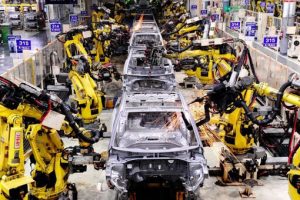
In the face of climate change and depleting oil reserves, alternative fuels receive increasing attention. Two promising alternatives are biofuels and hydrogen, which when used in fuel cell cars, could lead to zero-emission vehicles.
While biofuels are already widely used as substitutes for fossil fuels, hydrogen is only now starting to take off. However, there are important synergies between biofuels and hydrogen: both can be produced in a climate- friendly way from biomass and coal.
Contents
Cost
Gas prices are skyrocketing, and more people are looking to alternative fuel vehicles (AFVs) to help them save money and reduce their carbon footprint. These vehicles run on biofuels, ethanol, and renewable diesel, which are typically lower in price than gasoline.
Ethanol is an alternative fuel that combines a blend of gasoline and a propellant derived from grain. Its prices tend to be much lower than those of regular gasoline and are more competitive than natural gas.
Another popular alternative fuel is propane, which is also relatively cheaper than gasoline and diesel. It can also help fleets cut fuel costs quickly because it doesn’t require costly diesel aftertreatment systems.
Finally, there are EVs, which use batteries to power an electric motor instead of a gas engine. They have higher upfront purchase costs than conventional models, but they can often save fleets a lot of money in the long run because they are so energy efficient.
Environment
The environment is everything that surrounds us, including the air, water, land, oceans, climatic factors, plants, animals and humans. It also includes all the natural resources, which help us survive.
Alternative fuel vehicles (AFVs) are dedicated, flexible fuel or dual-fuel vehicles that operate on an electric charge or run on alternative fuels, such as compressed natural gas (CNG), liquid natural gas (LNG), ethanol, biodiesel, propane and hydrogen. They reduce air pollution, greenhouse gas emissions and dependence on oil in both passenger and freight areas.
The environmental impacts of alternative fuels vary widely from one fuel to another. In a recent study, researchers compared the land and water footprints of five different vehicle types: gasoline cars, EVs, B20-fueled gasolene cars, E85-fueled ethanol cars and solar-powered hydrogen cars.
Safety
Alternative fuel vehicles — vehicles powered by biofuels, hydrogen, natural gas or propane — are becoming more prevalent on roadways across the United States. As a result, emergency responders need to be trained on the safety of these vehicles and their fuels.
For fire investigators, identifying the origin and cause of an incident involving an alternative fuel vehicle can be critical to the successful fire investigation. NFPA provides firefighter training to help first responders prepare for incidents involving these vehicles.
NFPA’s alternative fuel vehicle (AFV) training includes safety lessons and an interactive 3D exploratory app that teaches firefighters about AFVs’ unique components and how they work. These resources are available online and in classroom formats.
Reliability
The reliability and validity of alternative fuel vehicles has been a subject of debate. The jury is still out on whether EVs and their kin are more reliable than their gas powered counterparts, but they do have some significant advantages over gasoline and diesel vehicles, including better air quality and lower emissions.
The best way to measure the relative reliability of a vehicle is by looking at its cost, frequency and severity of repairs. The RepairPal Reliability Rating combines these factors into one score.
The Reliability Ranking is based on the most important reliability attributes, which are average annual repair costs, 0.4 visits to a repair shop per year and a 9% probability of a repair being a major issue. The RepairPal Reliability Ranking is a good indicator of a car’s ability to stand the test of time and keep its owners happy, even after many years of service. The best option is to get a quality, low maintenance vehicle that will last for many miles to come.



